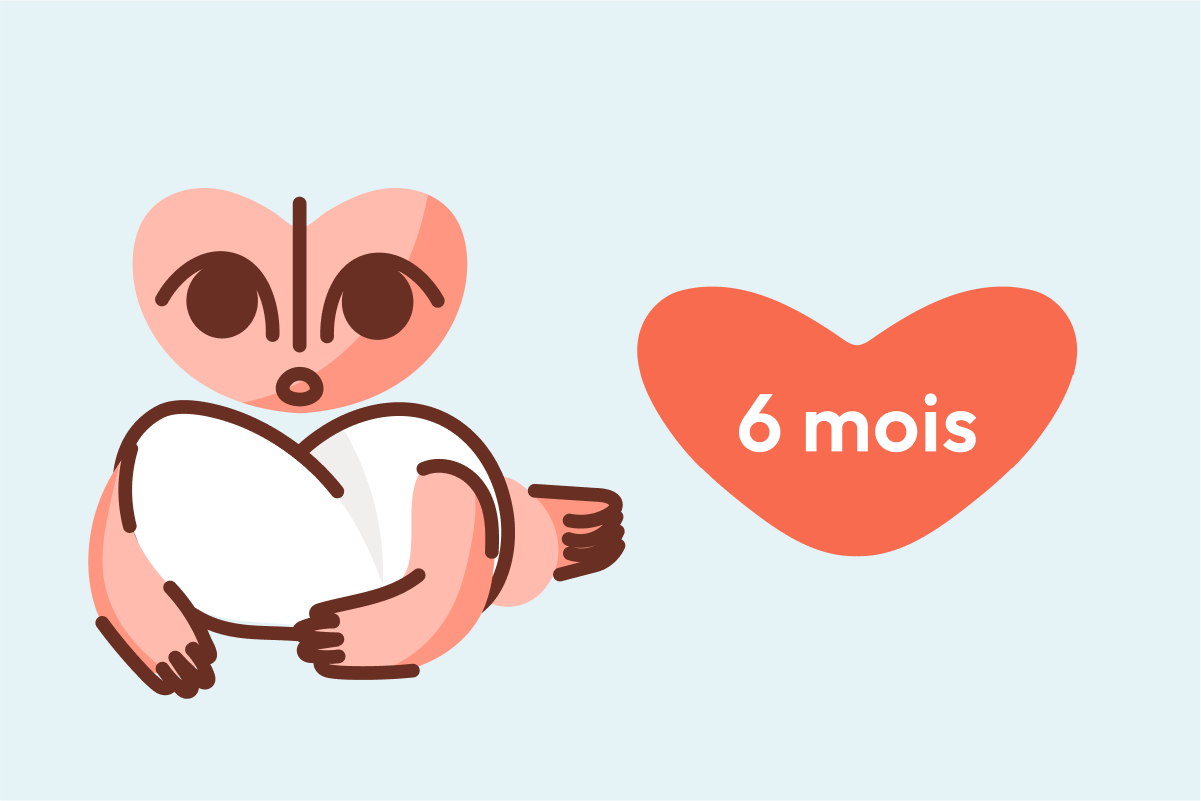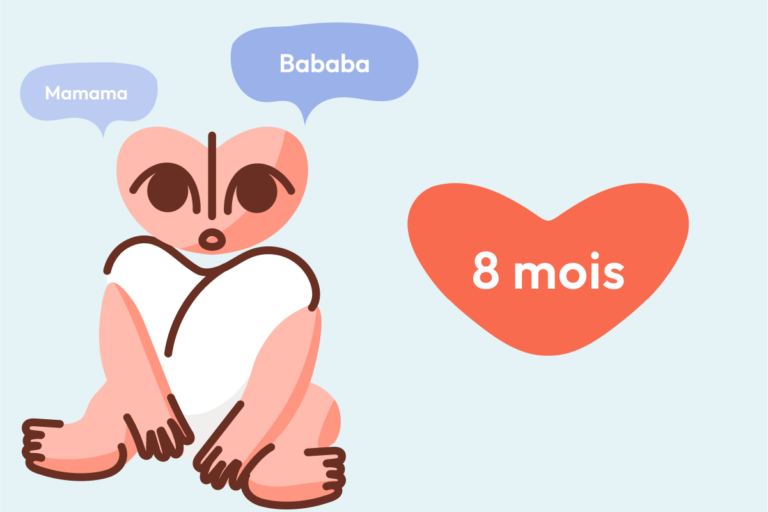A 6 month old baby—such a simple phrase, yet it captures a world of transformation, expectation, and sometimes even worry. Parents often find themselves questioning if everything is on track, scanning for the first hint of a giggle, a roll, or that famous first attempt to sit up—an adorable wobble that feels monumental. Day after day, new skills begin to shine through: perhaps a tiny hand grabbing a rattle with uncoordinated enthusiasm, or a curious gaze that lingers just long enough for you to wonder, “What does she see?” If you’ve been losing sleep (figuratively and literally), pondering nutrition, routines, or whether your child’s new habit of tossing everything on the floor is a sign of genius or just gravity at work—welcome. The journey with a 6 month old baby is equal parts awe, learning, and adaptation. Together, let’s explore the turning points at six months: growth, feeding choices, evolving sleep rhythms, medical recommendations, and the delightful, sometimes surprising, ways babies connect with their world.
6 Month Old Baby: Milestones and What to Expect
A 6 month old baby stands at the threshold of an energetic new chapter. You might notice, quite suddenly, that your baby’s entire posture has shifted: there’s more muscle tone, increased alertness, and an eagerness to engage. Sitting—with or without a wobble—may be in full swing, while rolling across the mat is practically a daily event. Hand-eye coordination blooms, seen as little fingers grasp and examine toys, often bringing every object directly to their mouths (the first step to sensory learning).
Wondering if your baby’s on track? Here’s a brief panorama of what’s typically observed:
- Unmistakable outbursts of laughter, squealing during play, rapid shifts from joy to impatience.
- Recognition of faces and familiar voices (sometimes showing “stranger anxiety”—that puzzled stare when meeting a new visitor).
- Babbling that mimics the rhythm of your own speech, and attempts to copy the musical ups and downs of conversation.
- Reaching, transferring toys between hands with deliberate (sometimes clumsy) movements.
- Rolling both ways, attempts to support their own sitting (sometimes toppling like a stack of blocks—don’t worry, that’s part of building balance!).
- Games like peek-a-boo suddenly make sense and invite delighted anticipation.
Every 6 month old baby finds their own route to these skills. Some rush ahead, while others prefer to deliberate from the sidelines. The true marker is progress: steady, playful learning, with caregivers offering patient encouragement.
Physical and Motor Development
Physical growth continues apace at six months, though the turbocharged gains of the newborn days have mellowed into steady increments. On average, a 6 month old baby weighs between 6 and 10 kilograms (13 to 22 pounds), stands 61 to 69 cm tall (24 to 27 inches), with a head circumference of roughly 44.5 to 47 cm (about 17.5 to 18.5 inches). These are reference ranges—what matters most is consistency along your child’s individual growth curve, a detail your paediatrician will monitor closely.
Motor Skills—What Changes?
After months spent mostly on their back, many babies now revel in rolling, whether from tummy to back or the reverse, expanding their territory inch by inch. Sitting may be accomplished briefly unsupported—often with sudden topples—while others remain content with gentle support.
What about fine motor development? That’s unfolding in spectacular style.
- Grasping and manipulating objects: You’ll see toys pass from one hand to the other.
- Everything goes into the mouth: This is sensory learning (and an oral stage in Freudian developmental terms), not just a sign of teething.
- Early pincer grasp: Some begin to use thumb and forefinger tentatively, a movement that will become more precise over coming months.
Encourage these blossoming skills through daily tummy time, presenting toys within sight but just out of reach, and offering assorted textures. Imagine a soft rattle, a chewable ring, or even a clean wooden spoon—each is an opportunity for exploration and strength-building.
Cognitive, Sensory, and Emotional Progression
The mental leap at six months is something to marvel at. Suddenly, the 6 month old baby seems more “tuned in”, tracking objects with their eyes, following voices, and, fascinatingly, beginning to search for toys that vanish from sight. This is early object permanence—a fundamental concept in developmental psychology indicating baby’s understanding that things exist even if hidden.
Cognition:
- Cause and effect games are irresistible: Drop a toy, wait for you to pick it up (repeat ad infinitum).
- Recognition of daily routines: For example, anticipation builds at bath time, or before a familiar lullaby.
- Enhanced curiosity: You’ll notice efforts to retrieve, inspect, and even “test” various objects by banging, shaking, or chewing.
Emotional Development:
- Babies at six months are deeply expressive—capable of joy, irritation, and frustration, sometimes within moments.
- Attachment is clear: there’s comfort with regular caregivers, while stranger anxiety may emerge.
- These reactions don’t signal abnormality; rather, they illustrate secure attachment and developing emotional intelligence.
Language and Communication:
The babbling repertoire expands: double syllables (“bababa,” “dadada”) and experimental sounds reflect your baby’s desire to participate in conversation. Responding to voices, especially when called by name, is common—often accompanied by wide, expectant eyes. Mimicking your tone, pausing for your reply, and using facial expressions all signal your baby’s absorption of social cues.
Supporting language skills at this age is both natural and enjoyable: speak, sing, and read together. Describe objects, narrate daily routines, and offer repetitive rhymes—these activities lay the foundation for later speech and comprehension.
Play, Activities, and Daily Stimulation
A 6 month old baby explores with all senses. Play is not frivolous—it is the serious work of childhood, essential for cognitive, sensory, and emotional maturation.
Suggested Activities:
- Classic peek-a-boo: awakens object permanence and brings instant laughter.
- Textured books, safe blocks, and rattles of diverse shapes: encourage grasping, shaking, and mouth exploration.
- Tummy time: crucial for muscle development in neck, back, and arms, paving the way for crawling.
Practical tip: Place a colourful toy just out of reach during tummy time. Observe the effort, rolling, and reaching as your baby strategises to attain the desired object—this is problem-solving at its most basic.
Structure daily routines to balance active play and periods of calm. A typical 6 month old baby benefits from two or three naps per day. After rest, take the opportunity for stimulating play, followed by feeding and then gentle cuddling before the next nap session.
Outdoor and Family Activities:
- Plan outings around established nap and feeding times to avoid overtiredness.
- Prepare a bag with essentials: nappies, wipes, extra clothing, sun hat, and a favourite toy.
- Use a secure stroller or baby carrier, and steer clear of crowded spaces if viral infections are circulating.
Sleep Patterns and Building Healthy Habits
Sleep—elusive, erratic, sometimes miraculous. By six months, the average 6 month old baby needs 14–15 hours of sleep in 24 hours, typically with longer stretches at night (often 6-8 hours uninterrupted, but night wakings are still common). Two to three shorter naps power recovery from all that sensory and motor practice.
Establishing Sleep Routines:
- Develop calming pre-bed rituals: a warm bath, soft singing, low lights—these become powerful cues for sleep onset.
- Place your baby in bed drowsy but not fully asleep; this supports self-soothing (sometimes called “self-settling”) and the gradual development of independent sleep patterns.
- Stick to consistent nap times and observe fatigue signs (eye rubbing, fussiness, decreased playfulness).
Disrupted napping? Growing curiosity or teething can make daytime sleep trickier. If trouble persists, create a quiet, dark environment and try to avoid stimulating activity beforehand. If things remain unsettled, it’s always wise to discuss options with your healthcare provider.
Safe Sleep Recommendations:
- Always lay baby on their back on a firm mattress.
- Keep cots clear of loose bedding, pillows, or soft toys to prevent suffocation risks.
- The safest sleepwear is a wearable baby sleep sack.
Feeding and Nutrition
At six months, the 6 month old baby meets a moment of nutritional transition. Milk—either breastmilk or infant formula—remains the mainstay, usually offered four to five times per day (each bottle feeding about 180–240 ml). As solids are introduced, milk volumes might gradually shift, but do not rush replacement.
Introducing Solids:
- Begin with smooth, iron-rich porridges or pureed vegetables (think carrots, pumpkin, or green peas), then gently introduce fruits like bananas or steamed apples.
- Move slowly: one new food every few days, while observing for rashes, digestive changes, or any signs of allergy.
- Pureed protein (such as well-cooked and blended chicken or soaked, mashed lentils) can be gradually incorporated.
Baby-Led Weaning (BLW):
Some families explore baby-led weaning: offering soft, appropriately shaped pieces of steamed vegetables or ripe fruit for self-feeding. BLW encourages autonomy and fine motor skills, but requires close supervision (and the ability to sit independently).
Foods to Avoid (for Now):
- Honey (risk of botulism)
- Cow’s milk as a main drink (breastmilk or formula still essential)
- Choking hazards: small, round, or hard foods, such as nuts, grapes, or certain raw vegetables
- Highly salted, sweetened, or processed food products
Managing Digestive Changes:
A transition to solids can bring mild constipation. Fibre-rich fruits (pear, prune) and offering small sips of water with meals may help. Gentle tummy massages—moving the hands clockwise around the lower abdomen—can assist with comfort.
Health, Hygiene, and Pediatric Care
Scheduled check-ups at six months align with immunisation calendars and provide an opportunity for paediatricians to monitor not just weight and length, but also neurodevelopmental progress and feeding dialogue. Wondering why your 6 month old baby is suddenly irritable and drooling rivers? Teething typically begins at this stage. Soothe sore gums with a cool (not frozen) teething ring or gentle gum massage.
Early oral hygiene is important: clean gums or first teeth with a soft, damp cloth after feeds. This habit lays the groundwork for lifelong dental health.
If signs of fever, persistent constipation, or changes in usual behaviour appear, prompt consultation with your pediatrician is essential.
Tips for Everyday Routines and Parental Balance
- Babyproof your environment: Secure furniture, cover electrical outlets, remove small or hazardous items from reach.
- Regular mealtime rhythm: Observe your baby’s hunger and satisfaction cues without forcing food.
- Consistent nap routines: Support sleep by providing a calm, predictable environment.
- Interactive play: Engage in sensory-rich, face-to-face games and foster independent exploration where safe.
- Encourage autonomy: Cheer every attempt, whether successful or not—this builds confidence and curiosity.
- Family organisation: Use planners, share caregiving duties, and make room for small moments of self-care in your own schedule.
Key Takeaways
- The 6 month old baby displays leaps in physical, emotional, and cognitive development—support their exploration with a secure, loving environment and evidence-based routines.
- Nutrition remains anchored by milk, with a gradual, mindful introduction of diversified solids.
- Fortify sleep with consistent patterns, safety-first bedding, and soothing pre-bed rituals.
- Encourage communication through talking, singing, and responding warmly—language starts long before first words.
- Protect and stimulate your baby through safe spaces, positive touch, and appropriate toys.
- Consult your healthcare provider promptly with health or behavioural concerns, and remember: resources and professionals are available at every step—consider downloading the application Heloa for personalised tips and free health questionnaires for your child.
Questions Parents Ask
How can I tell if my 6 month old baby is ready for solid foods?
Look for the ability to sit upright with little or no support, good head control, and a clear interest in the food others are eating. Babies usually reach out or open their mouths for offered food—these signals mean readiness. If uncertain, introducing foods one at a time and discussing options with your paediatrician can help you move forward confidently.
How much water can a 6 month old baby safely drink?
At this age, breastmilk or formula is the main hydration source. Once solid feeding begins, a few teaspoons of cooled, boiled water can be offered with meals—enough to get used to the taste and help digestion, but not to replace milk. Excess water can disturb sodium balance, so keep water amounts moderate until after the first birthday.
Is it normal for a 6 month old to be more fussy or clingy?
Fluctuations in temperament are common. Increased fussiness, clinginess, or need for reassurance often accompany teething, growth spurts, or new developmental phases. “Stranger anxiety” may arise as your baby forms deeper attachments. These are temporary stages. Providing physical presence and comfort reassures your baby, building long-term security. If behaviours seem excessive or concerning, seeking guidance from a paediatrician or baby health specialist is sensible.
Further reading:









